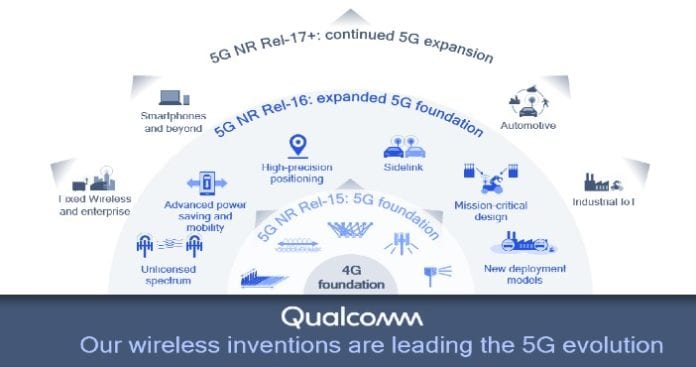Ongoing COVID-19 pandemic could delay work on Rel. 17
The first version of the 5G New Radio specifications focused on delivering enhanced mobile broadband (eMBB) which operators around the world have run with, building out non-standalone networks using a variety of spectrum types, including millimeter wave frequencies. The next phase of 5G, as spelled out in Rel. 16, was finalized on July 3 during a remote meeting of standards-setting body 3GPP.
Rel. 16 comes with a number of a key enhancements meant to provide better coverage, mobility and reliability while extending NR to new spectrum bands and better supporting 5G for vertical industries.
A key feature of Rel. 16 and heavily-backed by Qualcomm is 5G NR-U, which contemplates standalone and non-standalone modes of operation for 5G in the unlicensed 5 GHz and 6 GHz bands. Non-standalone NR-U would let operators tap unlicensed bands to add capacity in the much the same way as License Assisted Access works for LTE. The standalone mode of operation is similar to 5G MulteFire.
In addition to improving capacity and data rates, “This enables new use cases,” Qualcomm’s John Smee, vice president of engineering, said in an interview ahead of the Rel. 16 finalization. “It enables new people, new markets to deploy 5G.”
Smee elaborated in a blog post: “Expanding 5G to operate in all spectrum types and bands is a key aspect of our 5G vision.” On the standalone mode of operation for NR-U, he noted it “brings 5G benefits to a broader ecosystem, including mobile operators, service providers, wireless ISPs, and 5G private network operators. In addition, NR-U can also be used to deploy 5G in the new 6 GHz band. Looking forward, NR-U will serve as the basis for future spectrum innovations such as supporting the unlicensed 60 GHz band that is targeting Release 17.”
Other Rel. 16 advancements Smee called out in the blog include advanced power saving and mobility, high-precision positioning, mission-critical design and sidelink, which is presently focused on supporting advanced vehicular communications.
Sidelink, at one point in its evolution referred to as LTE Direct, supports device-to-device communications. Smee called autonomous vehicle the “killer app” for sidelink and noted improvements in Rel. 16 around coordinated driving and sensor sharing with increased throughput, lower latency, distributed synchronization and unified QoS control.
“Cellular V2X is real and it’s starting to get deployed,” Smee said. “That sidelink channel enables direct communication between UEs, in this case vehicles.” Beyond use in V2X, “The ability to have coverage extension, multi-hop device-to-device communication is very compelling. It’s a very rich area of research and invention for Qualcomm.”
Tantra Analyst Founder and Principal Prakash Sangam is an active member of 3GPP. In a recent piece, Sangam detailed relevant bits of technology and looked ahead to commercialization of Rel. 16 features. “Features such as NR-U and [Integrated Access Backhaul} might have an immediate need to improve the coverage and capacity of 5G networks being deployed now, so there is a good chance that they will be commercialized sooner…The bottom line is, with the standards finalized, the ecosystem can now focus on building products and start the next phase of their 5G journey. I expect the first features to appear in networks starting from early 2021

